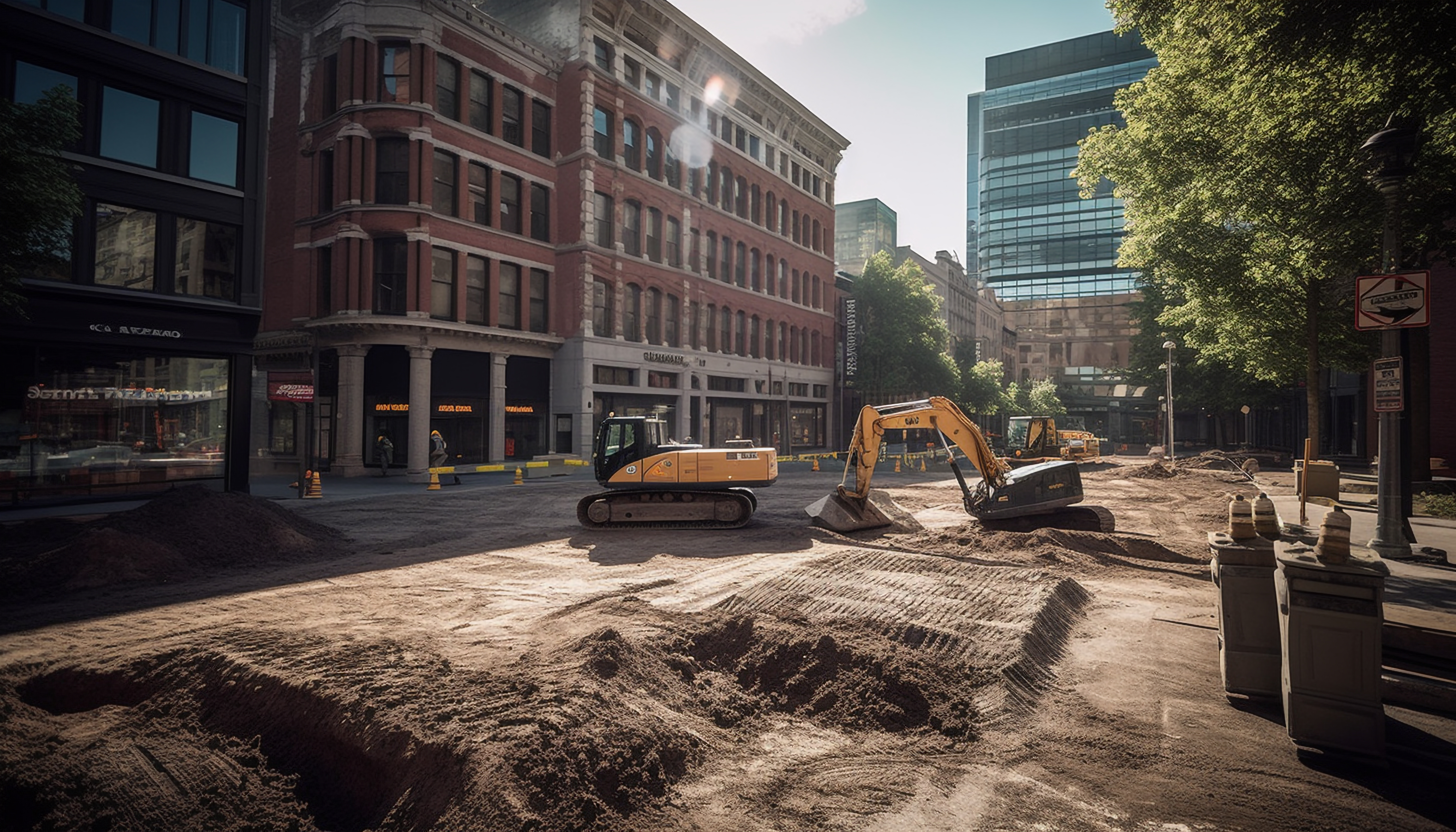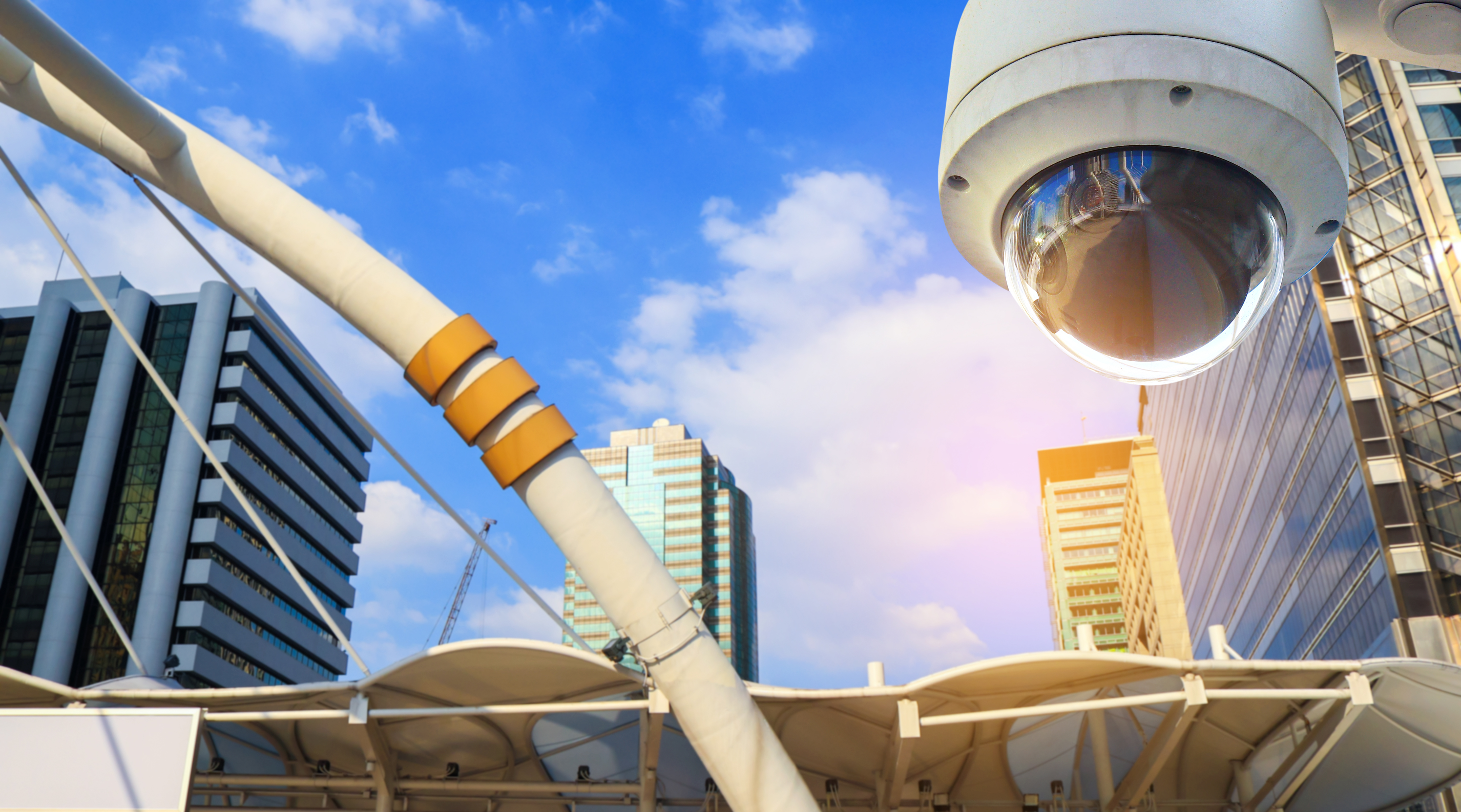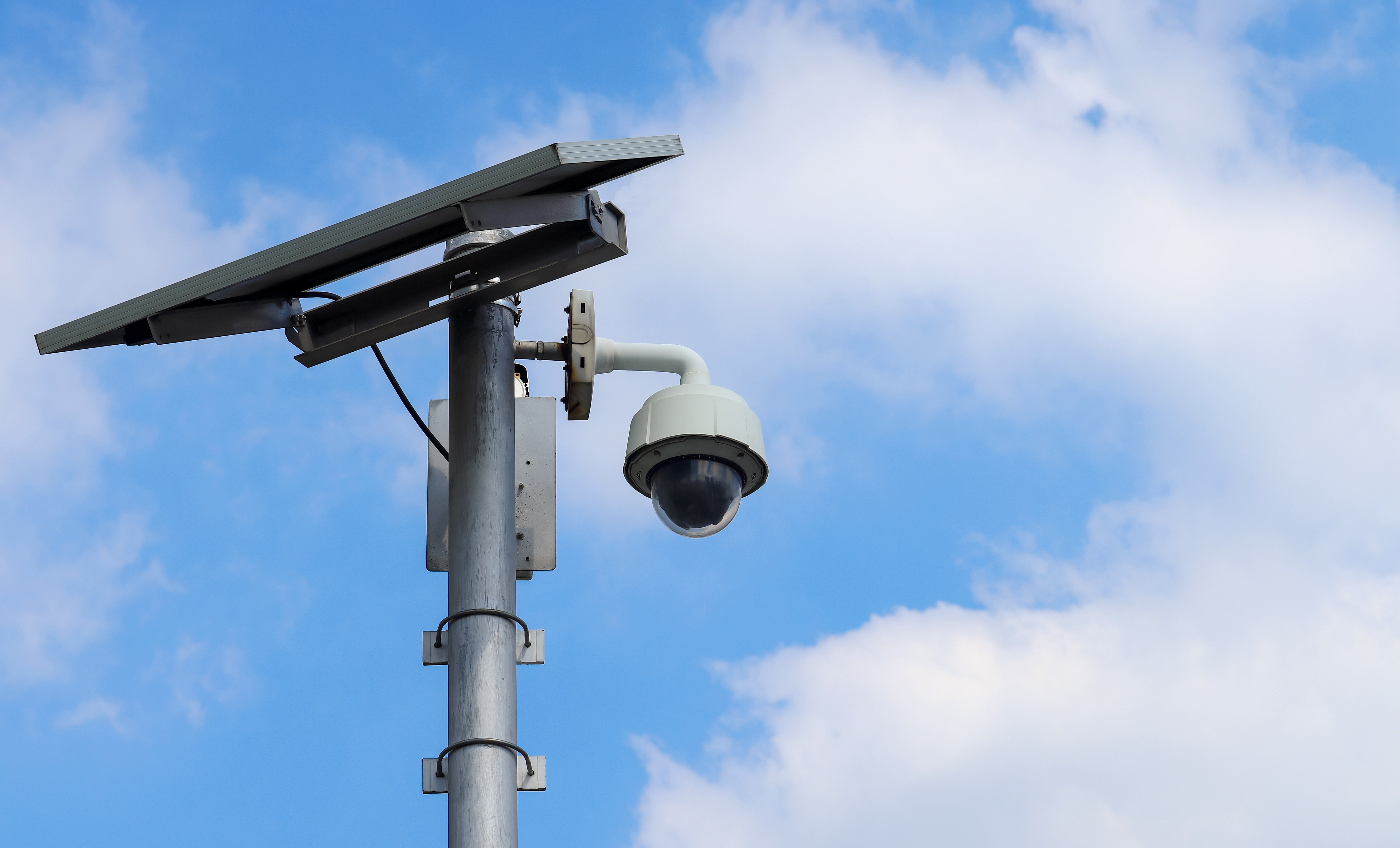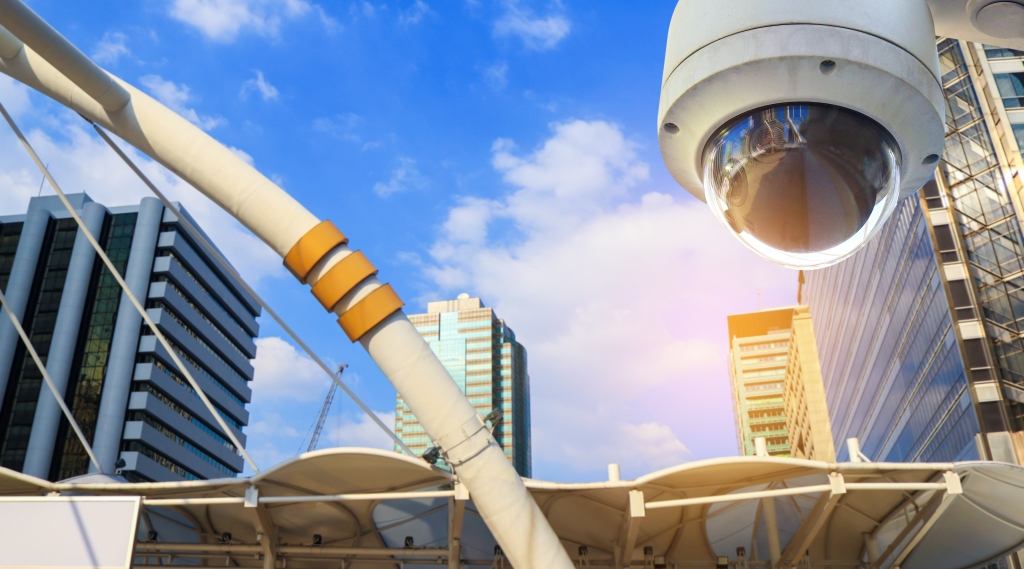Construction projects come with a variety of risks and challenges, one of the most significant being ensuring the security of the project site. Whether it’s a commercial building, a residential property, or an infrastructure project, security is a critical factor that should never be taken for granted. Theft, vandalism, and other security breaches can cause significant financial losses and even cause delays in the project timeline. Therefore, it is essential to build a strong foundation of security measures from the very beginning of the project. In this blog post, we will discuss some practical steps that can be taken to ensure the security of construction projects, including the use of security cameras, hiring security personnel, and implementing access control systems. Building a strong foundation of security measures will not only protect the project site but also give all stakeholders peace of mind throughout the duration of the project.
- The importance of security in construction projects
The importance of security in construction projects cannot be overstated. Construction sites are inherently risky environments, with numerous hazards and potential threats that can compromise the safety of workers, the integrity of the project, and the overall success of the endeavor.
First and foremost, ensuring security on construction sites is essential for the well-being of the workers involved. Construction sites are filled with heavy machinery, power tools, and materials that can pose significant risks if not properly managed. Implementing stringent security measures helps minimize the likelihood of accidents, injuries, and even fatalities.
Moreover, security in construction projects extends beyond the physical safety of workers. It encompasses protecting the project itself from theft, vandalism, and unauthorized access. Construction sites are often targeted by criminals seeking valuable equipment, materials, or even sensitive information. By prioritizing security, project owners can safeguard their investments and prevent costly setbacks.
Additionally, maintaining a secure construction site fosters a sense of trust and confidence among stakeholders, including clients, contractors, and employees. A well-protected project demonstrates a commitment to professionalism, quality, and care, enhancing the reputation and credibility of those involved. This, in turn, can lead to increased client satisfaction, positive word-of-mouth referrals, and future business opportunities.
Furthermore, compliance with legal and regulatory requirements is another crucial aspect of security in construction projects. Construction sites must adhere to local, state, and federal guidelines, including those related to safety standards, environmental protection, and data privacy. By ensuring strict compliance, project owners can avoid legal issues, penalties, and reputational damage.
In summary, the importance of security in construction projects is multifaceted. It encompasses the physical safety of workers, protection against theft and vandalism, fostering trust and confidence, and compliance with legal requirements. By prioritizing security from the outset, project owners can lay a strong foundation and set the stage for a successful and secure construction endeavor.

- Identifying common security risks in construction sites
Identifying common security risks in construction sites is a vital step in ensuring the safety and well-being of workers, visitors, and the overall success of the project. Construction sites can be inherently dangerous due to the presence of heavy machinery, hazardous materials, and the constant movement of workers and equipment.
One of the most common security risks in construction sites is unauthorized access. This can include individuals trespassing on the site, theft of equipment or materials, or even sabotage. By implementing effective access control measures such as fencing, gates, and security personnel, you can significantly reduce the risk of unauthorized access and deter potential criminals.
Another significant security risk in construction sites is the improper storage and handling of materials. Construction sites often house valuable materials and equipment, making them attractive targets for theft. Properly securing these materials in locked storage areas and implementing inventory management systems can greatly minimize the risk of theft and unauthorized use.
Additionally, construction sites are prone to accidents and injuries. It is crucial to identify potential safety hazards and implement measures to mitigate them. This can include providing proper safety training to workers, enforcing strict adherence to safety protocols, and conducting regular inspections to identify and address any potential risks.
Furthermore, the presence of valuable equipment and machinery on construction sites can make them susceptible to vandalism and damage. Implementing surveillance systems such as CCTV cameras can help deter potential vandals and provide evidence in the event of any incidents.
By proactively identifying and addressing these common security risks in construction sites, project managers can ensure a safer working environment, protect valuable assets, and maintain the integrity and success of the construction project. Prioritizing security measures not only protects individuals but also safeguards the reputation and financial stability of the construction company.
- Implementing access control measures
Implementing access control measures is crucial for ensuring security in construction projects. With multiple workers, contractors, and suppliers coming in and out of the site, it’s essential to have a system in place that allows only authorized individuals to enter and restricts access to sensitive areas.
One effective access control measure is the use of identification badges or cards. These can be issued to all personnel involved in the project, including employees, subcontractors, and vendors. Each badge should have a unique identifier and clearly display the person’s name, photograph, and company affiliation. This enables easy identification of authorized personnel and helps to deter unauthorized individuals from gaining access.
To further enhance security, access control systems can be implemented at entry points, such as gates and doors. These systems can include keypads, card readers, or biometric scanners that require a valid credential for entry. By using these systems, project managers can ensure that only individuals with the necessary permissions can enter restricted areas, such as equipment storage areas, control rooms, or sensitive construction zones.
In addition to physical access control measures, digital access control should also be considered. This involves securing computer systems, networks, and sensitive data related to the construction project. Implementing strong passwords, regularly updating software, and restricting access to sensitive information can help prevent unauthorized access or data breaches.
Regular monitoring and auditing of access control measures are essential to ensure their effectiveness. Project managers should regularly review access logs, inspect identification badges, and conduct spot checks to ensure compliance with security protocols. Any suspicious activities or breaches should be promptly investigated and appropriate actions taken to address the issue.
By implementing robust access control measures, construction projects can minimize the risk of theft, vandalism, unauthorized access, and potential safety hazards. This not only protects valuable assets but also ensures the safety and well-being of everyone involved in the project.
- Utilizing surveillance systems for enhanced security
When it comes to construction projects, ensuring the security of the site is of utmost importance. One effective way to enhance security is by utilizing surveillance systems. These systems provide an extra layer of protection, allowing you to monitor and safeguard your construction site around the clock.
Surveillance systems come in various forms, including specially designed construction site CCTV cameras, motion sensors, and alarm systems. These technologies work together to create a comprehensive security network, deterring potential trespassers and mitigating the risk of theft or vandalism.
CCTV cameras act as the eyes of your construction site, capturing real-time footage of the area. They can be strategically placed at key points such as entrances, exits, and high-risk areas. With advancements in technology, many surveillance systems now offer high-definition video quality and remote access, allowing you to monitor the site from anywhere at any time.
Motion sensors are another valuable component of a surveillance system. These sensors can detect any movement within a designated area and trigger an alarm or notification. By placing motion sensors in areas with restricted access or valuable equipment, you can quickly identify and respond to any unauthorized activities.
In addition to the surveillance equipment itself, it is essential to have a centralized monitoring system in place. This allows designated personnel to monitor the live feed from the cameras and respond promptly to any suspicious activity. By having trained security personnel or a dedicated team responsible for monitoring the surveillance system, you can ensure that any potential security threats are addressed swiftly.
Utilizing surveillance systems not only helps deter criminals but also provides valuable evidence in the event of an incident. The recorded footage can assist law enforcement in identifying and apprehending perpetrators, increasing the chances of recovering stolen equipment or property.
Investing in a well-designed and robust surveillance system is a proactive measure that demonstrates your commitment to security and safety on your construction site. By incorporating these technologies into your security strategy, you can establish a strong foundation for ensuring the protection of your construction projects.

- Securing construction equipment and materials
Securing construction equipment and materials is crucial to the success and safety of any construction project. Construction sites are often targets for theft and vandalism, which can lead to significant financial losses and delays in completing the project. Therefore, it is essential to implement effective security measures to protect valuable assets.
One of the first steps in securing construction equipment and materials is to establish a designated storage area that is enclosed and locked. This area should be well-lit and equipped with surveillance cameras to deter potential thieves. Additionally, installing high-quality fencing around the construction site can further enhance security.
It is also advisable to use tracking devices on expensive equipment and vehicles. GPS tracking devices can help locate stolen items quickly and increase the chances of recovery. These devices can provide real-time updates on the location of the equipment, ensuring that any unauthorized movement is detected promptly.
To further prevent theft, it is important to develop a comprehensive inventory management system. This includes keeping detailed records of all equipment and materials, including serial numbers, descriptions, and values. Regular audits should be conducted to identify any missing items and take immediate action to recover them.
Training and awareness among the construction team are vital in maintaining security. All workers should be educated on the importance of securing equipment and materials and be trained to report any suspicious activities immediately. Implementing strict access control measures, such as issuing identification badges and limiting entry points, can also help prevent unauthorized individuals from entering the construction site.
Lastly, collaborating with local law enforcement agencies and hiring security personnel can provide an extra layer of protection. These professionals can monitor the site, respond to any security incidents, and provide a visible presence that deters potential criminals.
By implementing these security measures, construction companies can greatly reduce the risk of theft and vandalism, ensuring the smooth progress of projects and safeguarding valuable investments. Prioritizing security not only protects the construction site but also promotes a safe working environment for all involved.
- Training and educating construction workers on security protocols
Training and educating construction workers on security protocols is crucial for ensuring a safe and secure construction project. Construction sites are inherently hazardous environments, with various risks and potential dangers present. By providing comprehensive training, workers can be equipped with the knowledge and skills necessary to identify and mitigate these risks, ensuring the safety of themselves and others.
One of the key aspects of training is familiarizing workers with the security protocols specific to the construction project. This includes understanding access control measures, emergency response procedures, and the proper use of personal protective equipment (PPE). Workers should be trained on how to properly secure construction equipment and materials, as well as the importance of reporting any suspicious activity or potential security breaches.
Furthermore, training should also cover potential security threats that may arise during construction, such as theft, vandalism, or unauthorized access. Workers should be educated on how to identify and respond to these threats, including the implementation of preventive measures like securing tools and equipment, setting up surveillance systems, and establishing restricted areas.
Regular refresher courses and ongoing education are also essential to ensure that workers stay updated on the latest security protocols and best practices. Construction sites are dynamic environments, with changing conditions and evolving risks. By providing continuous training, workers can adapt to these changes and maintain a high level of security awareness throughout the duration of the project.
In addition to training, it is equally important to foster a culture of security within the construction team. This involves creating an open and inclusive environment where workers feel comfortable reporting security concerns or incidents. Encouraging communication and collaboration among team members can help identify potential vulnerabilities and address them proactively.
By prioritizing training and education on security protocols, construction projects can build a strong foundation for ensuring the safety and security of workers, as well as the successful completion of the project. Investing in the knowledge and skills of construction workers not only mitigates risks but also demonstrates a commitment to their well-being, which ultimately leads to a more secure and productive construction environment.
- Building a strong perimeter and securing the construction site
When it comes to construction projects, one of the most crucial aspects of ensuring security is building a strong perimeter and securing the construction site. A well-secured site not only protects the project from theft and vandalism but also ensures the safety of workers and the public.
To begin with, constructing a sturdy and impenetrable perimeter is essential. This involves installing strong fencing around the site, preferably with anti-climbing features such as barbed wire or mesh. The height and strength of the fence should be sufficient to deter unauthorized access and discourage potential intruders.
In addition to a robust perimeter fence, implementing access control measures is vital. This includes installing gates with controlled entry points that can only be accessed by authorized personnel. Utilizing electronic access systems, such as keycards or biometric scanners, adds an extra layer of security by restricting entry to individuals with the proper credentials.
Securing the construction site involves more than just physical barriers. Deploying surveillance systems is another essential aspect of site security. Strategically placed cameras, both inside and outside the perimeter, provide real-time monitoring and recording of activities. This not only deters criminal behavior but also assists in identifying and apprehending any perpetrators.
Furthermore, it is crucial to have well-trained security personnel present at the construction site. These professionals serve as the first line of defense, monitoring the site, conducting regular patrols, and ensuring that all security protocols are being followed. Their presence not only deters potential trespassers but also provides a sense of safety and reassurance for workers and stakeholders.
Lastly, effective signage should be prominently displayed throughout the construction site. Signage should clearly indicate that the area is under surveillance, access is restricted, and trespassers will be prosecuted. This acts as a deterrent and helps in reinforcing the seriousness of the security measures in place.
By building a strong perimeter, implementing access control measures, deploying surveillance systems, employing trained security personnel, and utilizing clear signage, construction projects can establish a secure environment. This not only protects the project from potential threats but also ensures the safety and well-being of everyone involved.
- Establishing effective communication channels for security incidents
Establishing effective communication channels for security incidents is a crucial aspect of ensuring the safety and protection of construction projects. In the construction industry, where multiple stakeholders, contractors, and workers are involved, prompt communication is essential to address and resolve security incidents efficiently.
One of the first steps in establishing effective communication channels is to designate a dedicated point of contact for security-related matters. This individual should have a thorough understanding of security protocols and procedures, as well as the authority to coordinate and communicate with relevant parties in case of an incident.
In addition to a designated point of contact, it is essential to establish clear lines of communication between all stakeholders involved in the project. This includes the project owner, contractors, subcontractors, security personnel, and any other relevant parties. Regular meetings and updates should be scheduled to discuss security concerns, share information, and address any potential vulnerabilities or incidents.
Utilizing technology can greatly enhance communication channels for security incidents. Implementing a centralized incident reporting system or utilizing specialized security management software can streamline the process of reporting and responding to incidents. This technology can facilitate real-time communication, enable efficient documentation of incidents, and ensure that all parties involved are promptly informed.
It is also important to establish a protocol for escalating security incidents. This protocol should clearly outline the steps to be taken in case of a security breach, including who should be notified, what actions should be taken, and how information should be disseminated to all relevant parties.
Furthermore, effective communication channels should not only focus on addressing security incidents but also on proactively preventing them. Regularly sharing security updates, conducting training sessions, and disseminating best practices among all stakeholders can help create a culture of security awareness and ensure that everyone is on the same page when it comes to maintaining a secure construction environment.
By establishing effective communication channels for security incidents, construction projects can respond swiftly and effectively to any potential threats or breaches. This proactive approach not only protects the project and its stakeholders but also contributes to building a strong foundation of security in the construction industry.

- Collaborating with local law enforcement and security agencies
Collaborating with local law enforcement and security agencies is a crucial step in ensuring the safety and security of construction projects. These agencies have a wealth of knowledge and experience in dealing with various security concerns, and their expertise can be invaluable in mitigating potential risks.
By establishing a strong partnership with law enforcement and security agencies, construction companies can gain access to valuable resources such as crime statistics, threat assessments, and guidance on implementing effective security measures. These agencies can also provide advice on the best practices for securing construction sites, including the use of surveillance systems, access control measures, and alarm systems.
In addition to providing guidance and expertise, collaborating with law enforcement and security agencies can also enhance communication and coordination during emergencies. By establishing a direct line of communication with these agencies, construction companies can quickly report any suspicious activities or incidents, allowing for swift response and resolution.
Furthermore, involving local law enforcement and security agencies in the planning and execution of construction projects can act as a deterrent to potential criminals. The visible presence of security personnel and law enforcement officers can significantly reduce the likelihood of theft, vandalism, and other security breaches.
It is important to note that collaboration with law enforcement and security agencies should be an ongoing process. Regular meetings and updates should be conducted to ensure that all parties are aware of any changes in project timelines, potential security risks, or emerging threats. By maintaining open lines of communication, construction companies can work hand in hand with law enforcement and security agencies to address any security concerns promptly and effectively.
In conclusion, collaborating with local law enforcement and security agencies is an essential component of building a strong foundation for security in construction projects. By leveraging their expertise, resources, and presence, construction companies can enhance the safety and protection of their sites, ultimately leading to successful and secure project completion.
- Regularly reviewing and updating security measures for ongoing projects
Ensuring security in construction projects goes beyond implementing measures at the beginning. It requires regular review and updating of security measures throughout the duration of the project. As construction projects progress, new challenges and risks may arise, making it crucial to stay vigilant and adaptable to maintain a strong foundation of security.
Regular reviews of security measures allow project managers to identify any vulnerabilities or gaps that may have emerged over time. This can be done by conducting comprehensive security audits or enlisting the help of security professionals who specialize in construction projects. By proactively seeking out potential weaknesses, project teams can address them promptly, minimizing the risk of security breaches or incidents.
Updating security measures is essential to keep up with evolving security threats and technologies. As new advancements are made in the field of construction security, it is important to assess whether current measures are still effective or if additional precautions need to be implemented. This may involve implementing advanced access control systems, surveillance technologies, or cybersecurity measures to protect sensitive project data.
Furthermore, regular communication and collaboration with stakeholders, including contractors, subcontractors, and security personnel, can provide valuable insights into any security concerns or issues that may have been overlooked. By fostering an open and proactive environment, project teams can work together to address security challenges and ensure that everyone is aligned with the latest security protocols.
Ultimately, regular reviewing and updating of security measures demonstrate a commitment to maintaining a secure environment throughout the lifespan of a construction project. By prioritizing security and adapting to changing circumstances, project teams can build a strong foundation that safeguards both the project and the individuals involved.
In conclusion, ensuring security in construction projects is of utmost importance when it comes to building a strong foundation. By implementing the strategies and best practices outlined in this article, you can minimize risks, protect your workers, safeguard your materials, and ultimately achieve successful project outcomes. Remember, security is not an afterthought but an integral part of the construction process. So, prioritize safety and security from the very beginning to create a solid foundation for your construction projects. Happy building, and stay secure!

Leave a comment